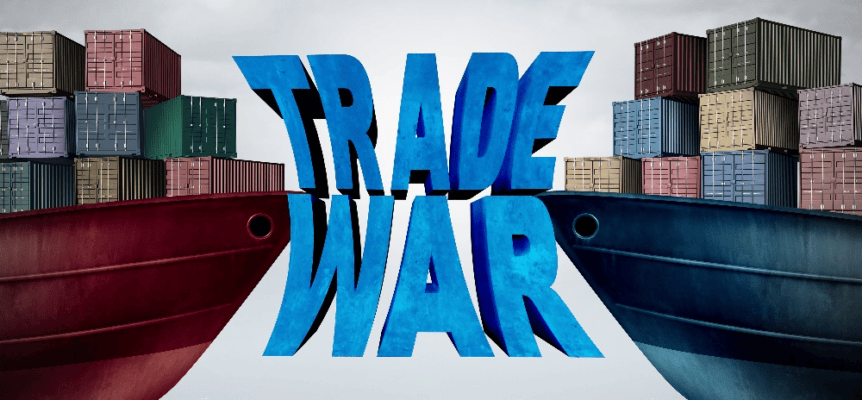INTRODUCTION:
The United States and China have been ramping up to a trade war over the last 10 years due to the rising trade deficits since 2008. In the year 2018, the US imported $540B goods from China, with the largest imports coming from computers, cell phones, apparel, and footwear. Meanwhile, the US exports to China only reached $120B, with the largest exports being commercial aircraft, soybeans, and automobiles. This resulted is a $420B trade deficit and 28% of the US public debt to foreign countries being controlled by China.
International trade tensions escalated in early 2018 when the US implemented a 30% tariff on all solar panel imports (excluding Canada). China saw this as a direct threat to their economy as they are the number one producer of solar panels in the world. Additionally, the US quickly initiated a 20% tariff on washing machine imports, a 25% tariff on steel imports (excluding Argentina, Australia, and Brazil), and a 10% tariff on aluminum imports (excluding Argentina and Australia). In response, China enacted an export tariff ranging from 15 to 25% on 128 products. This accelerated the timelines of both countries and by July 6th, 2018 a trade war was in full effect with both countries charging a 25% tariff on their first list of products.
Since then, a second round of tariffs for both countries went into effect on August 23rd, 2018, and a third round of tariffs for both countries was in effect by September 24th, 2018. Following the third round of tariffs, the US and China agreed to a 90-day temporary truce that would allow for trade negotiations to begin. China reverted automobile tariffs back to its standard 15% tax, resumed purchasing agricultural products, and agreed to limit its production and distribution of the drug Fentanyl. Initially, negotiations were gaining traction and the truce was extended indefinitely. However, talks met a standstill in May 2019 when President Trump announced an increase to the third round of tariffs from 10% to 25%. Once more China retaliates to the increase by increasing their third round of tariffs ranging from 5 to 15% per category effective June 2019.
Another aspect of the trade war to consider is the US Department of Commerce’s list of 85 Chinese entities that US companies are banned from selling to without government permission. The list includes Huawei Technologies, a multinational technology company that provides telecommunications equipment and sells consumer electronics, and its affiliates. China announced the creation of its own “unreliable entities” list but has yet to release it to the public.
Presently, the total US tariffs in effect exclusively to Chinese goods is $250B, and the total Chinese tariffs applied exclusively to US goods is $110B.
CURRENT STATUS:
As of August 1st, 2019, President Trump announced a fourth round of tariffs will go into effect on September 1st, 2019 due to the lack of cooperation and commitment from the Chinese government. This round of tariffs is set to cover the remaining $300B of consumer goods. On Monday August 5th, 2019, China retaliated with a dangerous form of trade protectionism known as currency manipulation. The Yuan, China’s national currency, has dropped to its weakest level in a decade. China has also mandated all state-owned companies to stop purchases of US agriculture products, specifically soybeans.
The deliberate devaluing of the national currency is defensive measure that could start a currency war. This decision has made Chinese goods cheaper for overseas buyers, something that is necessary now that their largest exporter has imposed tariffs on practically all goods. The declining value of the Yuan is set on a fixed exchange rate, meaning its value is tied to another currency. Unfortunately, the Yuan is heavily linked to the US dollar due to the 1944 Bretton Woods Agreement that named the US dollar the world’s reserve currency.
Additionally, the Yuan’s value is determined by the Communist Party who controls the Central Bank and all critical business in China. Fluctuations in the Yuan allow China to keep export prices low compared to its competitors. This kind of currency management system ensures that the US remains the largest trading partner.

